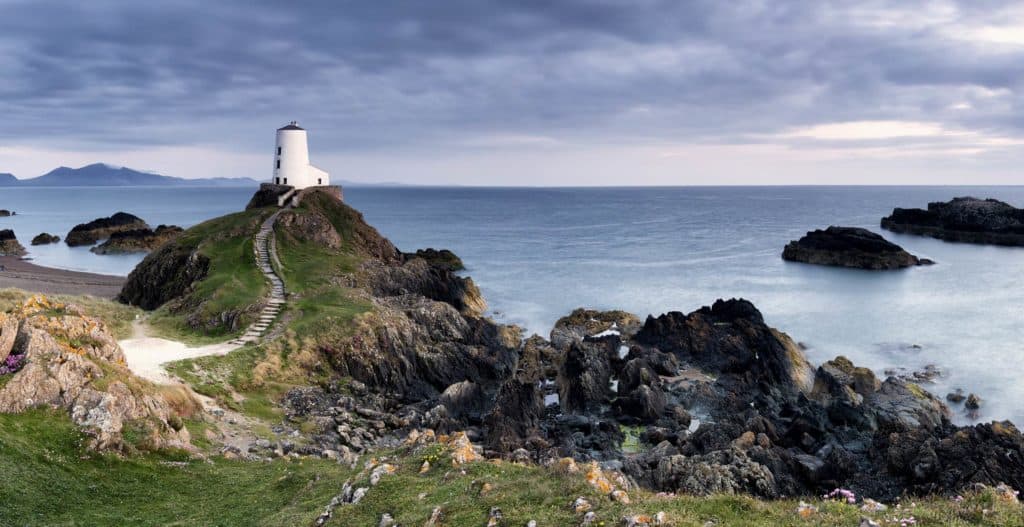St Teilo was a 6th century monk and bishop, and an early Welsh saint. The patron saint of fruit trees and horses, his feast day is celebrated on 9th February.
Although a largely forgotten saint today, there are more than 25 churches in Wales, Cornwall and Brittany dedicated to Teilo, showing us the importance of this early Welsh saint. Only the patron saint of Wales, St David, has more churches dedicated to him.

So who was St Teilo?
According to tradition, Teilo (also known as Elios, Eliau, Teliarus, Teliau or Télo), was born at Penally near Tenby in South Pembrokeshire around 480-500AD. He went on to study under St Paulinus at the monastic school at Whitland, Carmarthenshire. Here he met and became firm friends with Dewi (St David), who may have been his cousin. Teilo subsequently travelled with him to Mynyw, now known as St David’s, where Dewi set up his religious community.
In about 518 AD the friends, along with St Padam, are said to have set out on a pilgrimage to Jerusalem where all three were consecrated bishops by John III, Patriarch of Jerusalem.
Bishop Teilo went on to found the episcopal church of Llandeilo Fawr (the Great Church or Abbey of St Teilo) in Dyfed, and may also have set up a centre at Llandeilo in Carmarthenshire. However the outbreak of Yellow Fever in Wales around 549 AD forced Teilo and his religious community to flee to Cornwall and from there, over to Dol in Brittany where they stayed for seven years.
Teilo and his followers would not have felt too out of place in northern France. Driven out of southern Britain by invading Germanic tribes, Celtic people had begun to settle there since the 5th and 6th centuries.
There are several legends about Teilo during his time in Brittany. According to one, he saved the local people from a winged dragon which he tamed and then kept tied to a rock in the sea. In another, when a local lord offered him all the land he could encircle between sunset and sunrise, Teilo chose to ride on a stag to cover as much ground as possible in the time available.
Several churches in Brittany are dedicated to St Teilo, including the church at Plogonnec, Finistére, and the Chapel of Our Lady in Kerdévot. In both cases he is shown wearing bishop’s robes and mitre, and is seated on a stag, no doubt in reference to the legend.

Whilst in France, Teilo, St Samson and his followers are also said to have planted three miles of fruit trees. Even today the fruit groves they planted are known as the groves of Teilo and Samson.

In around 554 Teilo and his followers returned from Brittany to Llandeilo Fawr. After the death of St. David, Teilo became revered as one of the most holy men in Wales. He was joined at Llandeilo by many disciples including Cynfwr, Teulyddog and Llywel. He died at the abbey of Llandeilo Fawr on February 9th, probably around the year 560.
St. Teilo is most famous today for what is supposed to have happened after his death. According to an account in the early 12th century by Geoffrey of Llandaff, there was a dispute over the body of St Teilo. There were three claimants to the remains: the church at Penally (where he was born), Llandeilo (where he founded his church and died), and Llandaff (who claimed him as their bishop). During the night, the body is said to have multiplied into three, one for each church, thus settling the argument.
In the early Middle Ages, it was financially advantageous to have relics or a shrine in a cathedral, in order to attract pilgrims. Geoffrey’s account would very conveniently explain why there were three different sets of relics, yet all apparently true relics. The tomb of Teilo in Llandaff Cathedral is most probably the correct one, and his shrine on the south side of the high altar did indeed become a place of pilgrimage in the Middle Ages.
St Teilo’s Well at Llandyfan also became a place of pilgrimage. Pilgrims came from far and wide to drink the spring water at the well, which had a reputation for curing paralysis and similar ailments. Today the waters of the well have been diverted into a nearby reservoir but the well, used in the 19th century for outdoor baptisms, is still there next to the Victorian church built on the site.





